About This E-Book
Praise for Deep Learning Illustrated
Half Title
Series Page
Title Page
Copyright Page
Dedication Page
Contents
Figures
Tables
Examples
Foreword
Preface
How to Read This Book
Acknowledgments
About the Authors
I: Introducing Deep Learning
1. Biological and Machine Vision
Biological Vision
Machine Vision
TensorFlow Playground
Quick, Draw!
Summary
2. Human and Machine Language
Deep Learning for Natural Language Processing
Computational Representations of Language
Elements of Natural Human Language
Google Duplex
Summary
3. Machine Art
A Boozy All-Nighter
Arithmetic on Fake Human Faces
Style Transfer: Converting Photos into Monet (and Vice Versa)
Make Your Own Sketches Photorealistic
Creating Photorealistic Images from Text
Image Processing Using Deep Learning
Summary
4. Game-Playing Machines
Deep Learning, AI, and Other Beasts
Three Categories of Machine Learning Problems
Deep Reinforcement Learning
Video Games
Board Games
Manipulation of Objects
Popular Deep Reinforcement Learning Environments
Three Categories of AI
Summary
II: Essential Theory Illustrated
5. The (Code) Cart Ahead of the (Theory) Horse
Prerequisites
Installation
A Shallow Network in Keras
Summary
6. Artificial Neurons Detecting Hot Dogs
Biological Neuroanatomy 101
The Perceptron
Modern Neurons and Activation Functions
Choosing a Neuron
Summary
Key Concepts
7. Artificial Neural Networks
The Input Layer
Dense Layers
A Hot Dog-Detecting Dense Network
The Softmax Layer of a Fast Food-Classifying Network
Revisiting Our Shallow Network
Summary
Key Concepts
8. Training Deep Networks
Cost Functions
Optimization: Learning to Minimize Cost
Backpropagation
Tuning Hidden-Layer Count and Neuron Count
An Intermediate Net in Keras
Summary
Key Concepts
9. Improving Deep Networks
Weight Initialization
Unstable Gradients
Model Generalization (Avoiding Overfitting)
Fancy Optimizers
A Deep Neural Network in Keras
Regression
TensorBoard
Summary
Key Concepts
III: Interactive Applications of Deep Learning
10. Machine Vision
Convolutional Neural Networks
Pooling Layers
LeNet-5 in Keras
AlexNet and VGGNet in Keras
Residual Networks
Applications of Machine Vision
Summary
Key Concepts
11. Natural Language Processing
Preprocessing Natural Language Data
Creating Word Embeddings with word2vec
The Area under the ROC Curve
Natural Language Classification with Familiar Networks
Networks Designed for Sequential Data
Non-sequential Architectures: The Keras Functional API
Summary
Key Concepts
12. Generative Adversarial Networks
Essential GAN Theory
The Quick, Draw! Dataset
The Discriminator Network
The Generator Network
The Adversarial Network
GAN Training
Summary
Key Concepts
13. Deep Reinforcement Learning
Essential Theory of Reinforcement Learning
Essential Theory of Deep Q-Learning Networks
Defining a DQN Agent
Interacting with an OpenAI Gym Environment
Hyperparameter Optimization with SLM Lab
Agents Beyond DQN
Summary
Key Concepts
IV: You and AI
14. Moving Forward with Your Own Deep Learning Projects
Ideas for Deep Learning Projects
Resources for Further Projects
The Modeling Process, Including Hyperparameter Tuning
Deep Learning Libraries
Software 2.0
Approaching Artificial General Intelligence
Summary
V: Appendices
A. Formal Neural Network Notation
B. Backpropagation
C. PyTorch
PyTorch Features
PyTorch in Practice
Index
Credits
Code Snippets
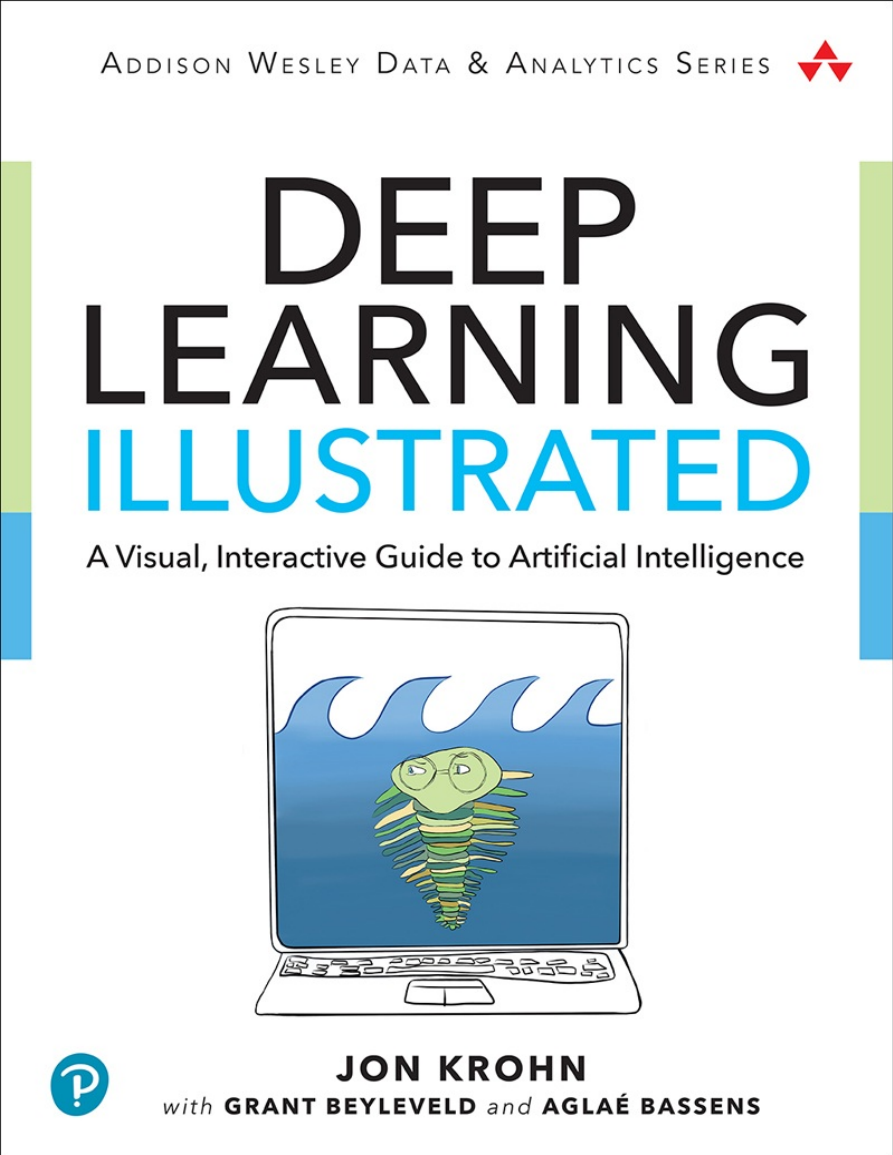
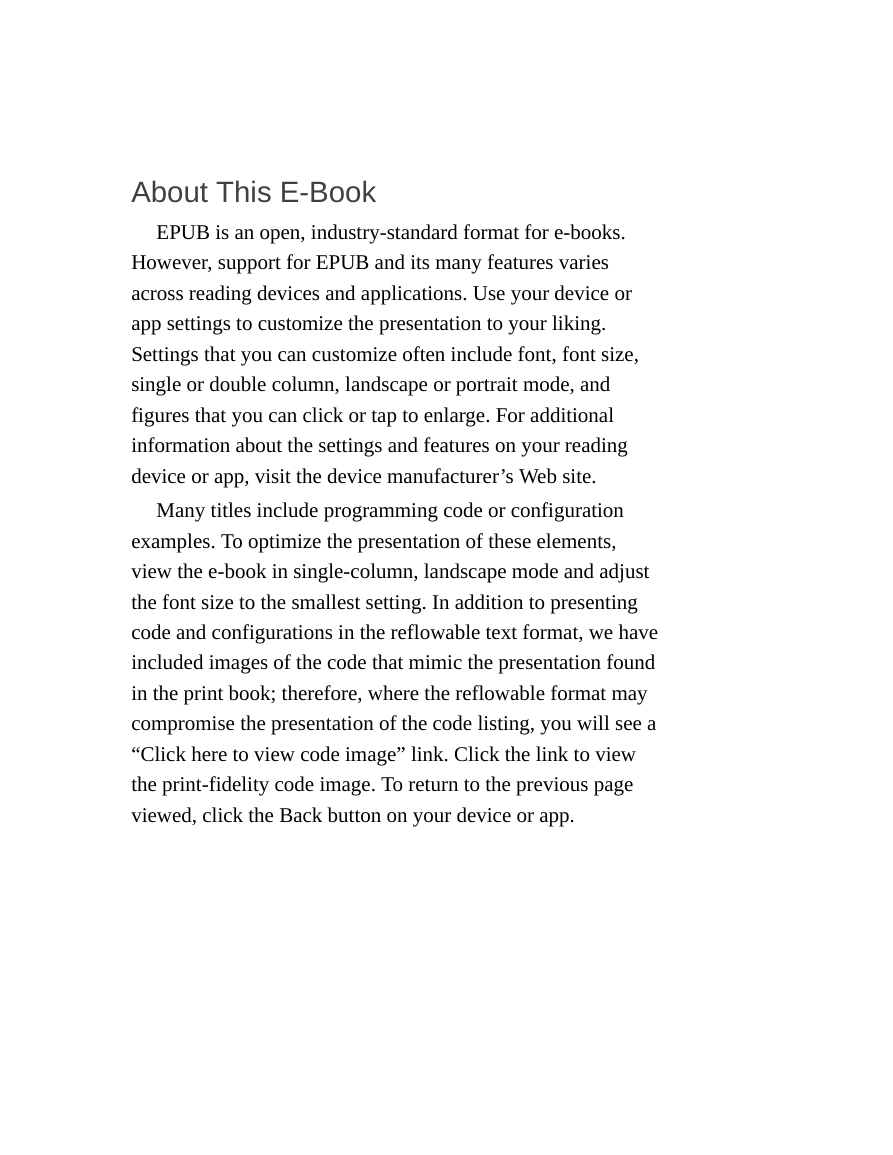
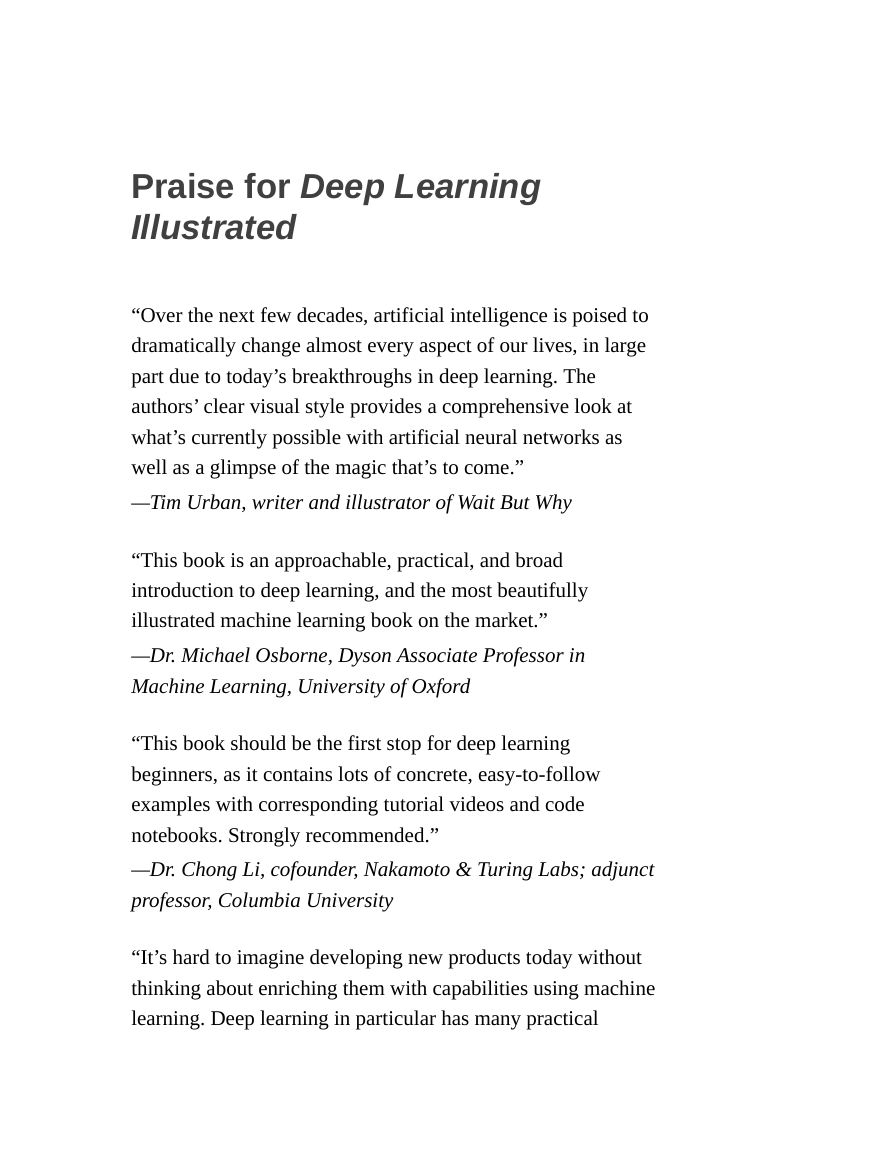
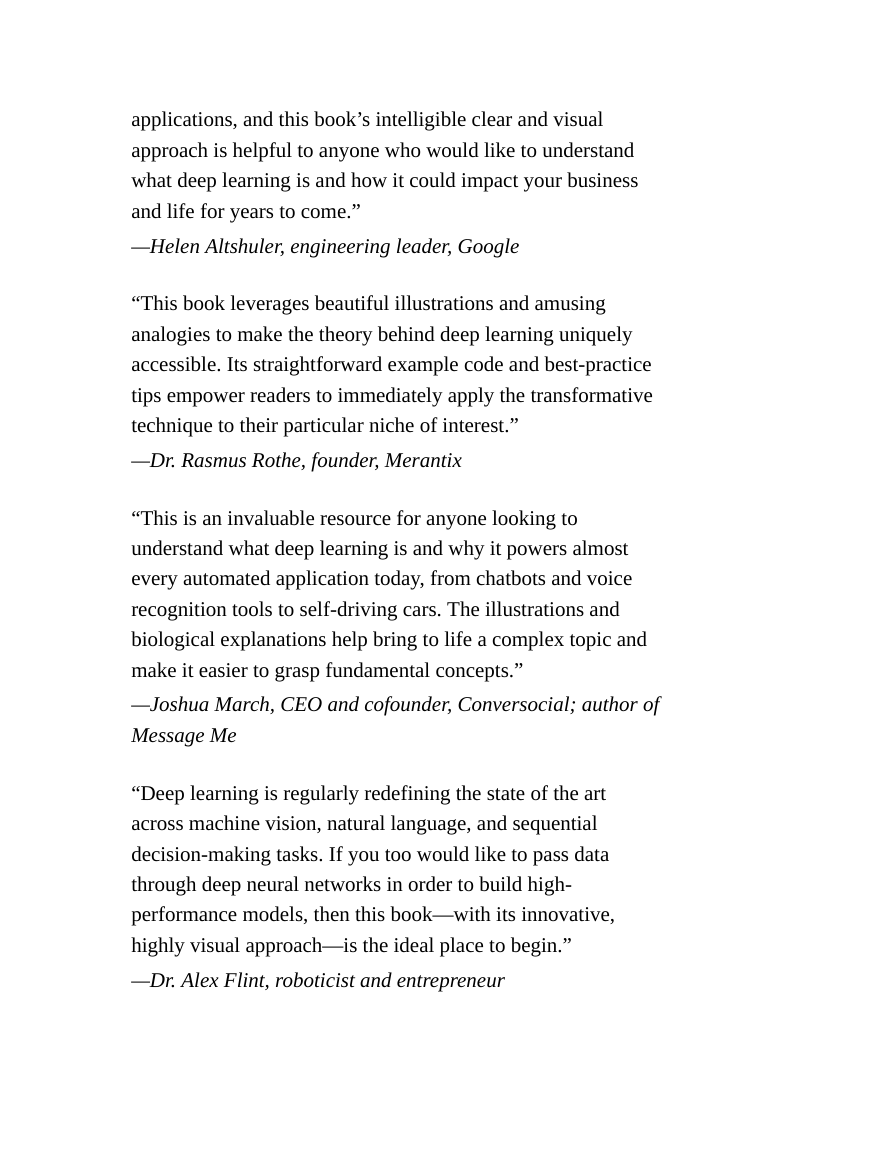

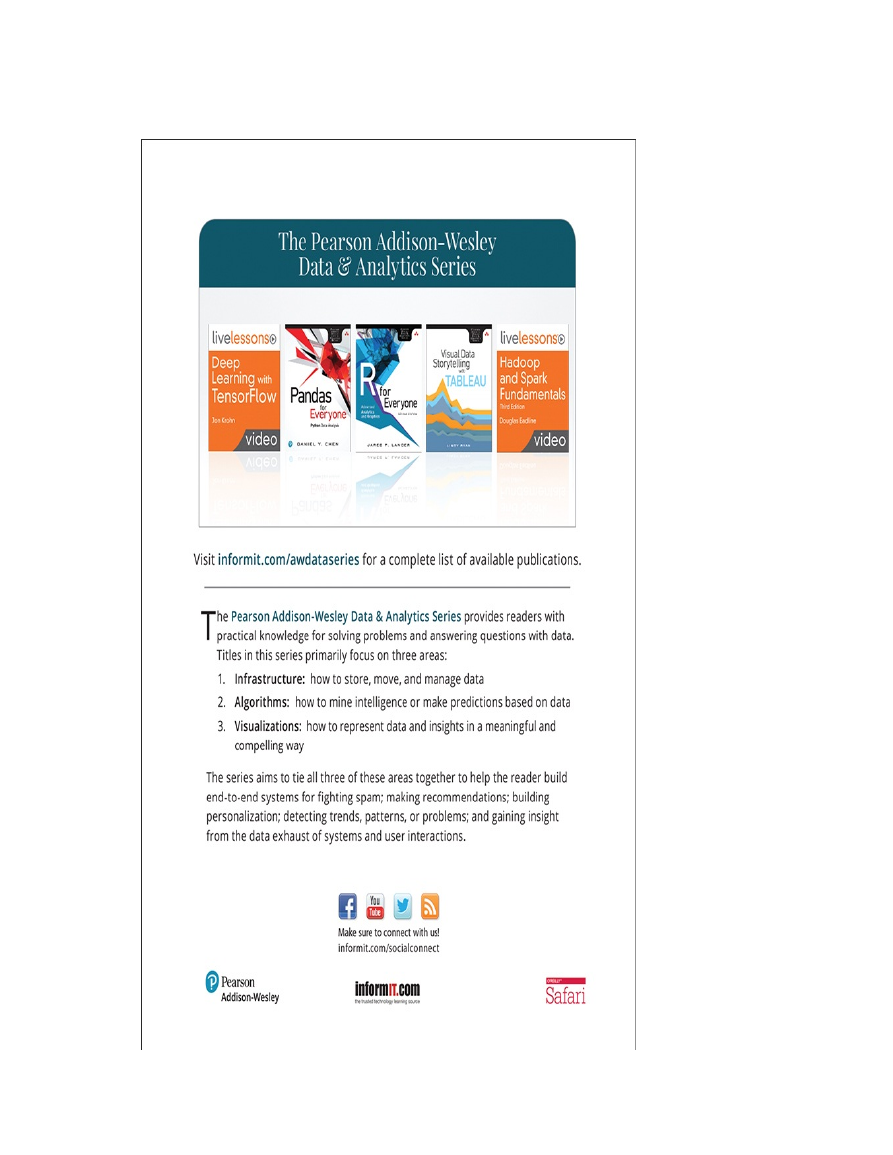

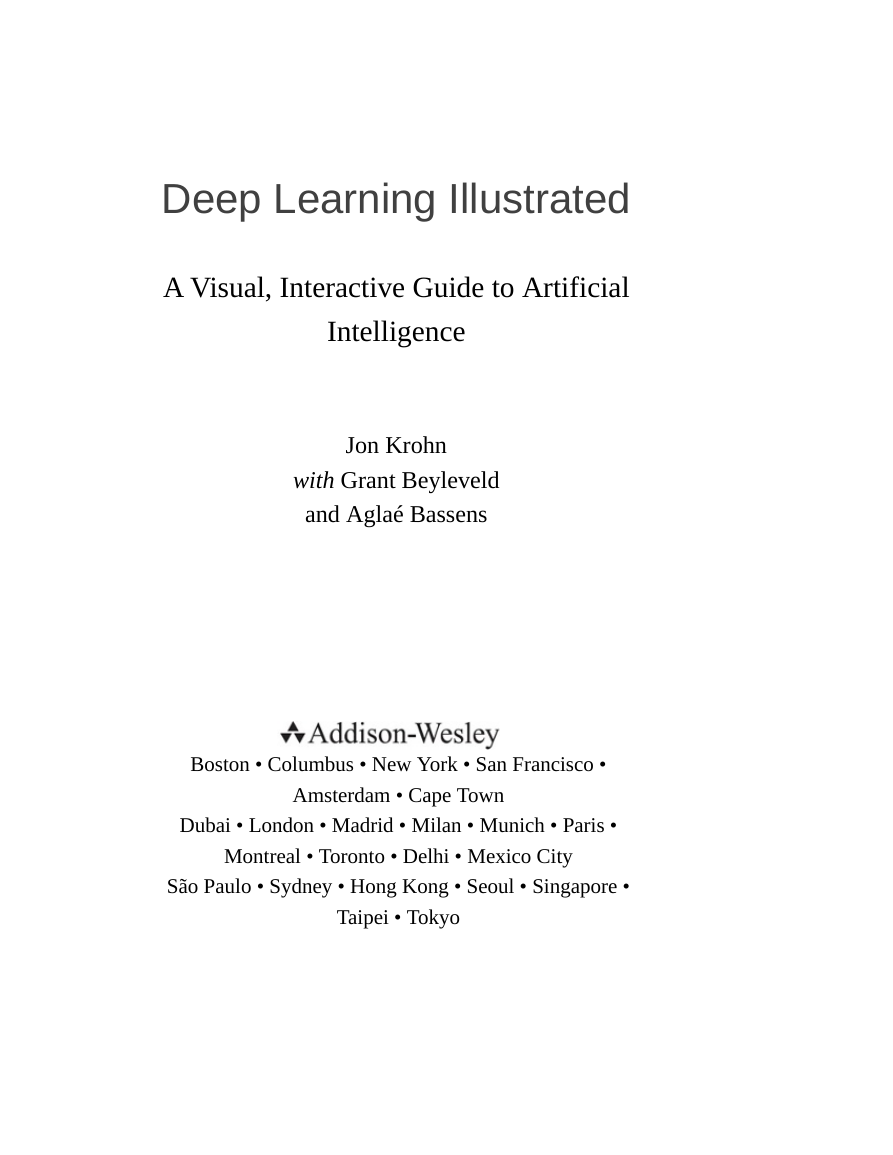








 2023年江西萍乡中考道德与法治真题及答案.doc
2023年江西萍乡中考道德与法治真题及答案.doc 2012年重庆南川中考生物真题及答案.doc
2012年重庆南川中考生物真题及答案.doc 2013年江西师范大学地理学综合及文艺理论基础考研真题.doc
2013年江西师范大学地理学综合及文艺理论基础考研真题.doc 2020年四川甘孜小升初语文真题及答案I卷.doc
2020年四川甘孜小升初语文真题及答案I卷.doc 2020年注册岩土工程师专业基础考试真题及答案.doc
2020年注册岩土工程师专业基础考试真题及答案.doc 2023-2024学年福建省厦门市九年级上学期数学月考试题及答案.doc
2023-2024学年福建省厦门市九年级上学期数学月考试题及答案.doc 2021-2022学年辽宁省沈阳市大东区九年级上学期语文期末试题及答案.doc
2021-2022学年辽宁省沈阳市大东区九年级上学期语文期末试题及答案.doc 2022-2023学年北京东城区初三第一学期物理期末试卷及答案.doc
2022-2023学年北京东城区初三第一学期物理期末试卷及答案.doc 2018上半年江西教师资格初中地理学科知识与教学能力真题及答案.doc
2018上半年江西教师资格初中地理学科知识与教学能力真题及答案.doc 2012年河北国家公务员申论考试真题及答案-省级.doc
2012年河北国家公务员申论考试真题及答案-省级.doc 2020-2021学年江苏省扬州市江都区邵樊片九年级上学期数学第一次质量检测试题及答案.doc
2020-2021学年江苏省扬州市江都区邵樊片九年级上学期数学第一次质量检测试题及答案.doc 2022下半年黑龙江教师资格证中学综合素质真题及答案.doc
2022下半年黑龙江教师资格证中学综合素质真题及答案.doc